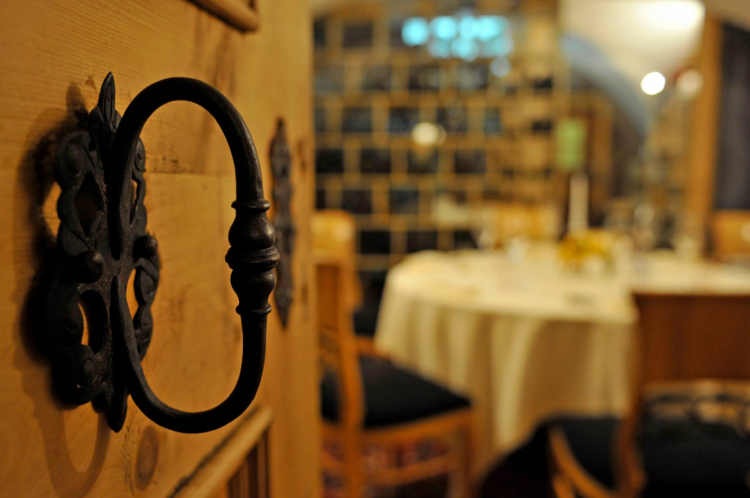«I remember when, I believe it was 1995, Edoardo Raspelli tore me to pieces: “That chef serves wood”, he wrote. An almost final sentence. He referred to lichens, but I was recuperating an ancient local tradition, something our grandparents used to do. There were entire villages here that lived on edible Icelandic lichens. I went on with determination. Then a decade later or so René Redzepi legitimized them, and all of the sudden it looked like I was following a trend».

Getting inside El Molin – mulino is the Italian word for mill, and of course the restaurant is located inside a beautiful ancient mill, the only one left of the 48 that used to be on Rio Gambis
Sometimes, being too much ahead leads to sarcastic results, but
Alessandro Gilmozzi smiles, calmly. Among many talentless careers, his great talent allowed him a career below his merits, but long and successful nonetheless: a quarter of a century in Cavalese, this year. «
El Molin opened in 1990, but I was at
Ducasse's at the time. I arrived two years later». It adds up. We say, brutally: “Don’t you think you would have deserved more?”. The chef is intelligent: «Perhaps. But I took a difficult road. Plus I’m reserved, calm, I’ve never looked for the spotlight». Sometimes, others look for him, «I’ve been invited to a congress in Bratislava, on the 23rd October. I’ll cook with
Gert de Mangeleer [the young three-starred chef at restaurant
Hertog Jan, in the suburbs of Bruges, in Belgium]. It will be nice».
Gilmozzi has a serenity full of charm. You can tell he’s a man used to the soothing silence of the woods, from which he draws inspiration for his recipes. He accepted his peripheral role with awareness – peripheral not just geographically, but culturally (in culinary terms, that is): in the
Paese d’ ‘o sole, he has always worked with resin and mountain herbs; with plenty of German tourists who look for
pummarola and
babà as soon as they cross the border, he chose his Dolomitic cuisine which is so similar to that of northern Europe it seems inspired by it.
To think that he hates imitations! «The other day I was thinking of a recipe with black grouse. I immediately called Magnus Nilsson (of restaurant Fäviken, in the remote forests of northern Sweden). I thought I recalled he was also working with the same ingredient, and I didn’t want it to look like I was copying him. “No, don’t worry, I use grouse”, he told me. So I felt better. It is a fact, however, that with a guy like him, there are many similarities: same territorial identity, same ingredients».
So, 25 years, «I’m working on a book, with
Montura». Twenty-five years without getting tired of enhancing his territory, so that in 2017 he has one of the best fine dining places in Italy, as proven by our beautiful dinner, illustrated by
Tanio Liotta. He has also added a wine bar/bistro and a pizzeria, all under the
El Molin brand, in the centre of Cavalese; and then there are many projects that have already started – like
Gilbach gin: this year he’ll produce 4,000 bottles, he’s already received an order for 1,000 from Japan – and many more are in progress, like beer, «the fermentation strains are from musk, then I used camomile, rye, hop, white and Icelandic lichens». We tasted it: it’s thick, nice, very aromatic.
Because now that wood, resin and lichens don’t scare anyone, Gilmozzi continues to present endless ideas enriching a fresh, contemporary, elegant cuisine. Of unquestionable value. And if you ask him what makes him proud – whether it’s the small empire he has silently created, or the rigorous coherence with which he’s continued his career, or the rewards he’s received… - he says: «
Terre Altre». That is to say the cooperative dedicated to young physically challenged people that he helped create and grow, with two hectares of land cultivated with beans, carrots, hemp… Following biodynamic agriculture: «the first five years, I would buy everything. They are now independent, they have their market. And they’ve created the first experimental vegetable garden».
Alessandro Gilmozzi from Cavalese, born in 1965, with experience with
Adrià and
Ducasse, and a very well deserved Michelin star since 2007, is this too. On top of being a great chef, he’s also a very humble and deliciously humane person.
Translated into English by Slawka G. Scarso